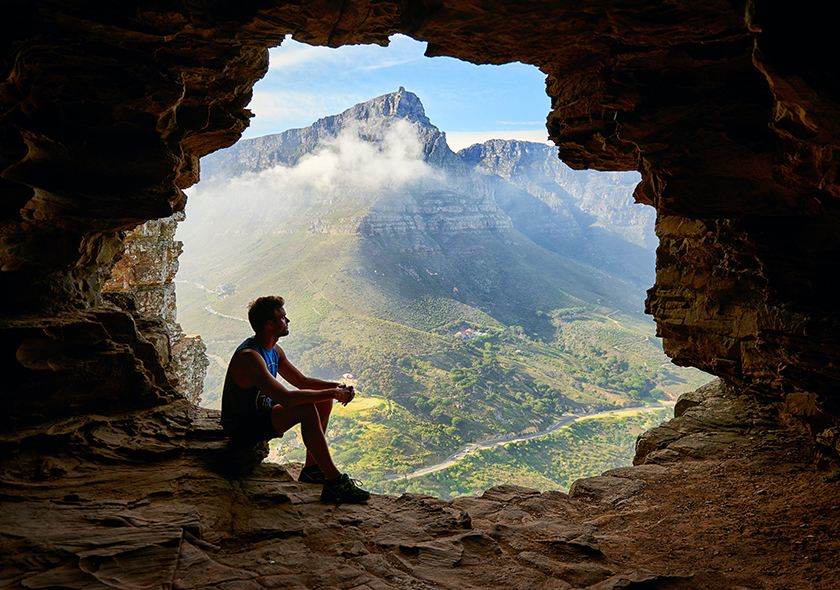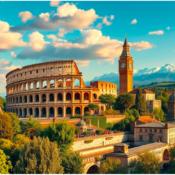15 Best Amazing Places to Explore in Spain
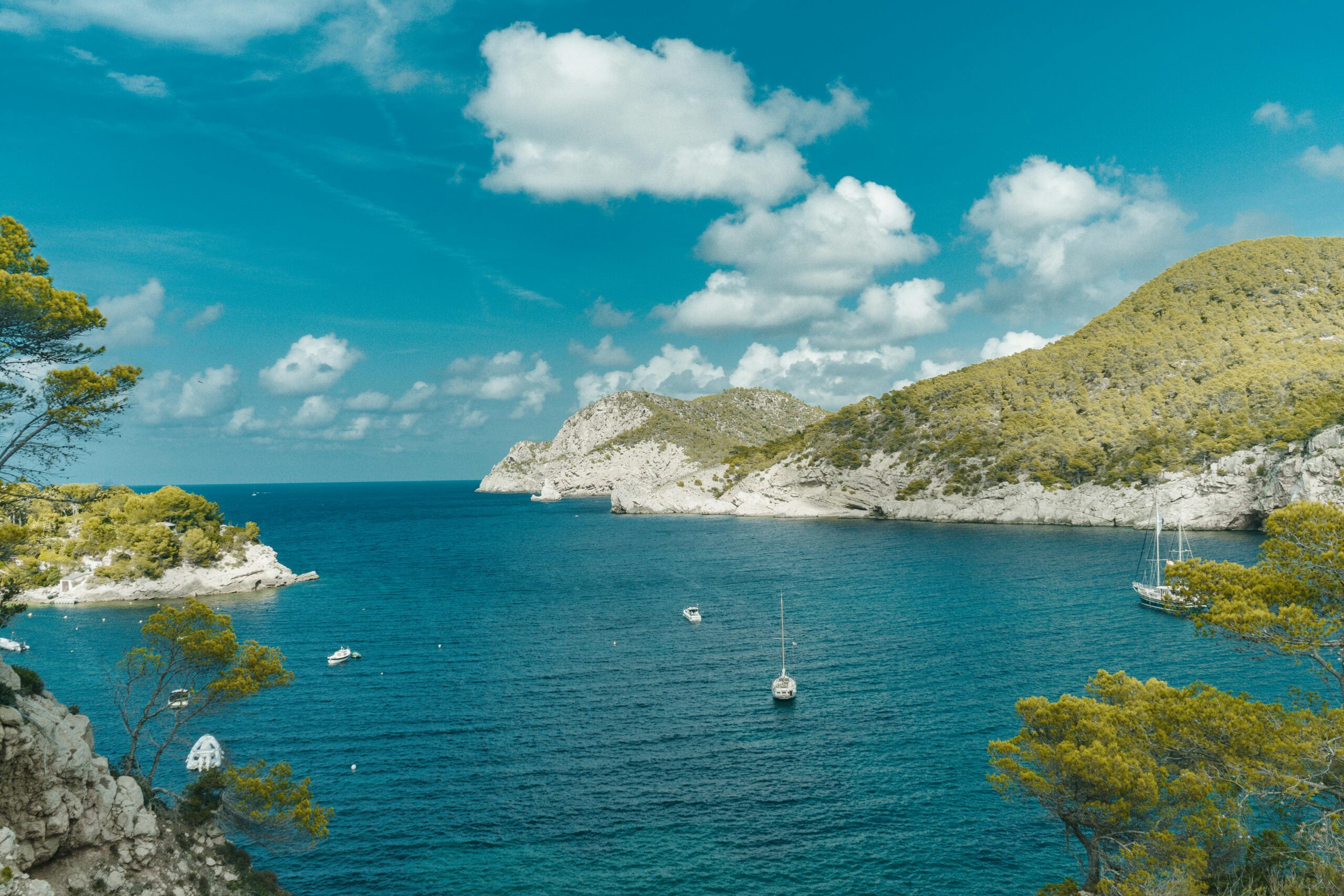
15 Best Amazing Places to Explore in Spain
Spain has one of the most amazing selections of sights to see and tourist attractions of any country in the world. From the untamed Sierra Nevada Mountain range to the white sand and azure lagoons of its Mediterranean islands like Ibiza, this European nation is awash with breathtaking natural beauty.
The various cultures found throughout the nation’s various areas add to its fascination. This region has an abundance of history, much of which may be discovered in a single city. Ancient Roman ruins, Moorish Islamic architecture, medieval castles, and fortifications, as well as palaces and residences from the Castilian and Hapsburg eras, may found in many Spanish cities. Many instances of contemporary Art Nouveau, Art Deco, and Modernist architecture may also found in the majority.
The nation also epitomizes everything that is best about just enjoying life: mouthwatering cuisine, outstanding artwork, incredible music, exuberant dances, and kind, welcoming people. Using our list of the top Spanish tourist destinations, you can organize your travels.
Best Places to Visit in Spain:
Below is the list of the places to explore in Spain:
1. Madrid:

The expansive capital city of Spain displays the amazing history of the nation. With hundreds of museums to see, royal palaces, marching soldiers, and changing of the guards, it’s the ideal vacation spot.
Seeing all three of Madrid’s main museums is a must-do while in the city. The Reina Sofia Museum, which is close by, displays contemporary treasures like Picasso’s powerful Guernica, while the Prado Museum, officially known as the Museo Nacional del Prado, displays what was once the Spanish royal collection of art. Additionally, the best of modern art combined with old master’s at the neighboring Thyssen-Bornemisza Museum.
Madrid is a quintessential European city for strolling, with broad boulevards like the famous Gran Via reserved for pedestrians and plenty of green areas to enjoy, such as Buen Retiro Park. This place has a thriving culinary scene, offering everything from sophisticated, Michelin-starred molecular gastronomy to informal tapas-tasting meals.
One of the city’s oldest neighborhoods, La Latina, has developed into a tapas hotspot with an abundance of places offering tapas, the majority of which have outside terraces. Traveling from place to place and trying their specialties is a lot of fun.
Also Read: 12 Day Trips from Madrid
2. Barcelona, Spain:
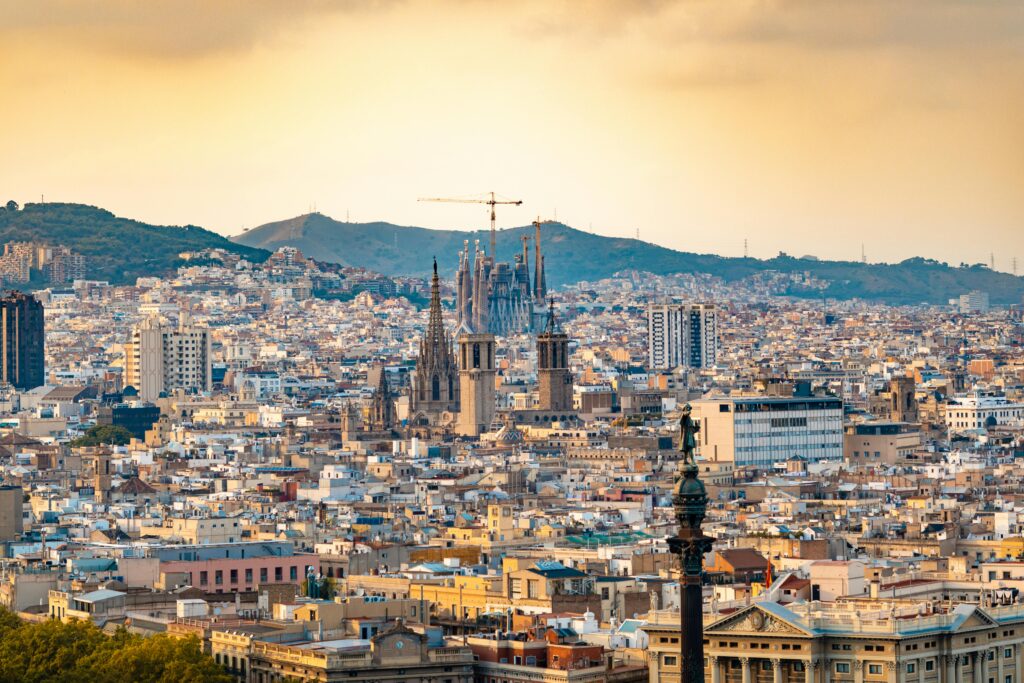
Compared to Madrid, the second-largest city in Spain provides a whole different kind of vacation experience. With bright, sunny weather to enjoy most days of the year, its coastline position gives it more of a resort atmosphere. Situated on the Mediterranean Sea on the northeastern coast of the country, it has a modern and progressive air that sets it apart from other Spanish cities like Madrid.
The enormous Sagrada Familia modern cathedral and the Joan Miro Museum, which was designed by the renowned artist himself before his death, are two of Barcelona’s must-see tourist destinations. There are over three miles of excellent beaches in Barcelona, as well as a large pedestrian-only boulevard called La Rambla that lined with trees. Everybody in the city appears to come out for a stroll there.
Proceed to the point where La Rambla meets the water, which is the location of the Maremagnum shopping center. Situated on a man-made island, nearly encircled by water. Rambla de Mar, a cool wooden drawbridge, is the path that leads to it. Every hour, it opens to allow yachts and sailboats to pass through. Visit La Terraza, the panoramic platform of the mall that offers 360-degree views of the city skyline and the lake. Situated on the same small peninsula as the mall, the city’s sizable aquarium is worth a visit.
A local mountain called Tibidabo has an attractive church and an amusement park at its summit. Don’t miss the opportunity to ride the funicular (incline railway) to reach it. Magnificent views of the city and the surrounding countryside will also be your reward.
3. San Sebastian:
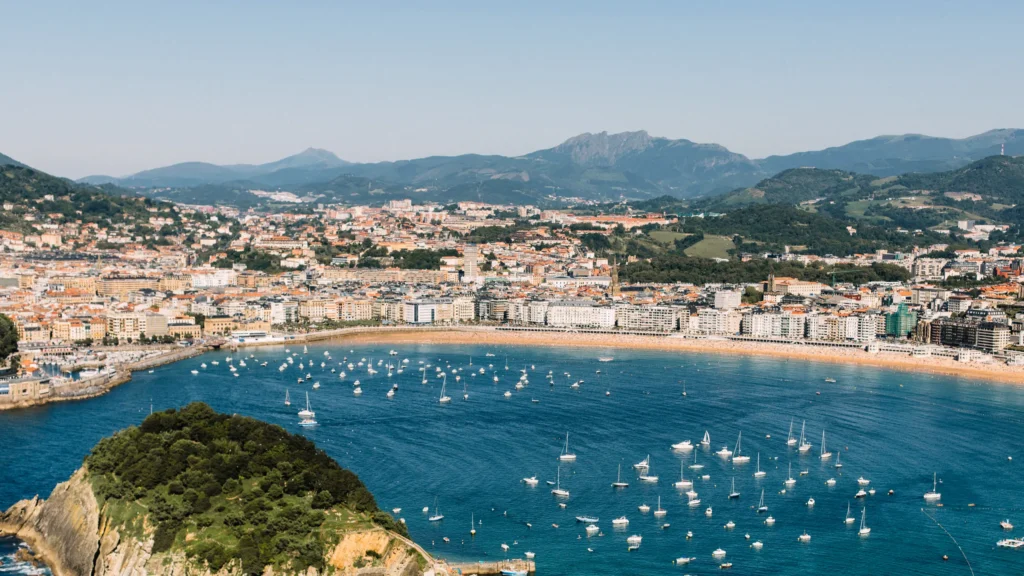
This tourist city is in the Basque Country on Spain’s northern coast. Situated directly on the picturesque Bay of Biscay, which leads to the Atlantic Ocean, lies San Sebastian. With a thriving surfing community in Playa de Zurriola, it’s a well-known surf town. Moreover, a visit offers the chance to engage with the distinctive Basque culture.
Activities in the region include trekking up Monte Orgull, the fortress-topped peak that overlooks the city’s harborside old town section or relaxing on the sandy beach at La Concha. Spending time in Parte Vieja, the historic town with cobblestones, is equally enjoyable.
4. Valencia:

Valencia is a port city with a long history of maritime connections and Spanish trade, particularly with Africa, the Middle East, and Europe. Situated on the southeast coast of the nation, it faces the Mediterranean Sea. Being a seaside city, it has some lovely beaches. Albufera Park is another outdoor destination worth seeing. It’s a wetlands reserve beside the ocean with lots of hiking routes and several nice beaches.
There are numerous museums in the city. The Museum of Fine Arts (Museu de Belle Arts de Valencia) is a must-see, with a superb collection of Spanish masterworks by Goya and El Greco. Along with the ruins of the old city walls, the medieval heart of the old city houses a sizable cathedral designed in the Gothic style.
Visit the Torres de Serranos, which served as a prison for more than 300 years and is one of the few remaining gates to the walled city. “González Martí,” the National Museum of Ceramics and Decorative Arts, is a treasure trove of information. This place focuses on Spanish ornamental arts and features an amazing collection of furniture, traditional costumes, and pottery. The Natural Science Museum’s extensive collection of dinosaur skeletons is sure to captivate children.
When you’re hungry, visit the city’s Mercado Central, a sizable market hall designed in the Art Nouveau style and constructed in 1914. It is home to numerous cafés and food vendors in addition to souvenir stores and other establishments catering to tourists. You’ll be surrounded by locals even though it’s a well-liked tourist destination because that’s where they hang out and eat.
5. Granada,Spain:
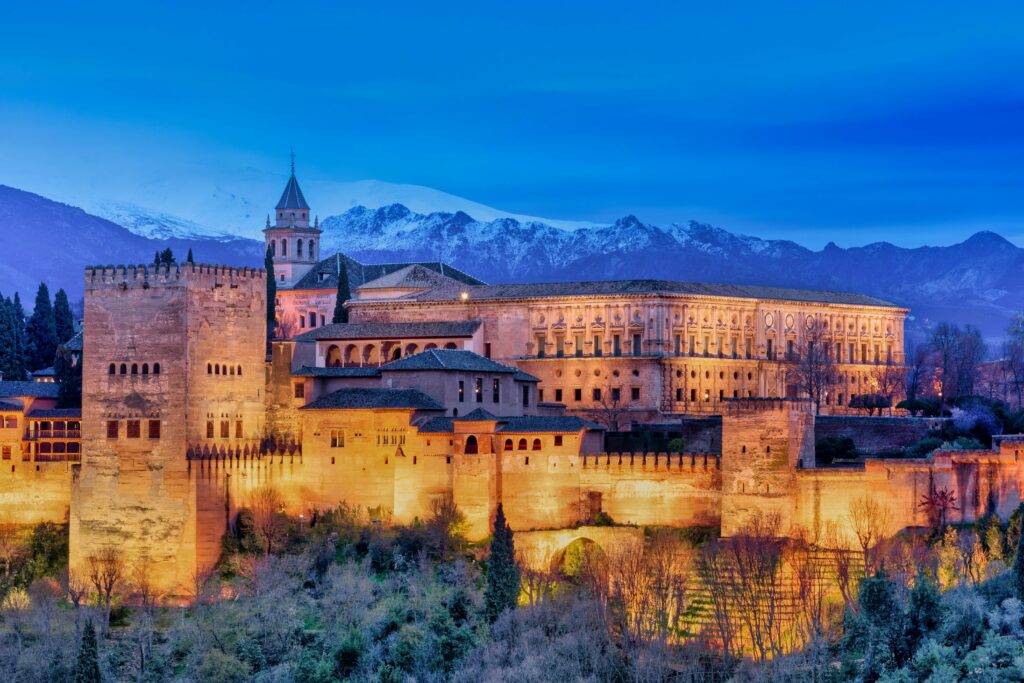
Granada is another exciting location in the southern area of Andalusia, home to the magnificent Alhambra Moorish hilltop castle and fortress. It has more amazing specimens of Islamic architecture, including as the complex of the Alhambra castle. The Albaicín is a well intact Moorish ancient town with small streets and most structures from the eighth, ninth, and tenth centuries. Because you can experience both old and modern Spain in one location, it’s a fantastic tourist destination.
Additionally, Sierra Nevada, the southernmost ski resort region in Europe, is not far from Granada. Situated just 26 miles (42 km) west of Granada, the expansive resort boasts more than 100 runs that are serviced by 17 lifts and 2 cable cars. Due to the high elevation, late November to early May might be considered the ski season. The bright beaches of Málaga are just 164 kilometers (102 miles) away from Sierra Nevada. This implies that you can go skiing in the morning and go to the beach in the afternoon (or vice-versa).
Granada is home to a sizable university, a bustling modern cultural scene, mouthwatering cuisine, tapas joints, and flamenco dance and music. Here, an elaborate 16th-century church serves as a symbol of Royal Spain, housing the remains of King Ferdinand and Queen Isabella, who unified the nation and funded Christopher Columbus’s exploration expeditions.
Suggested Reading: Best Beaches To Visit in Southern Spain.
6. Ibiza:
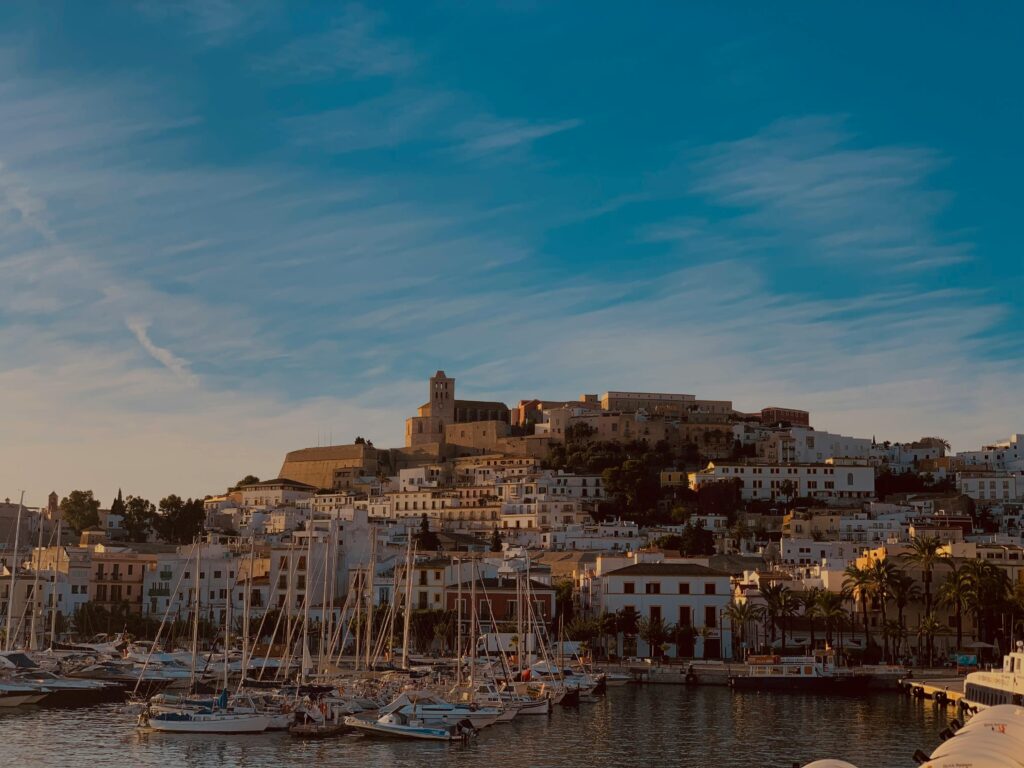
Ibiza, a resort island in Spain, is one of the best places for couples to holiday. It’s roughly 100 miles off the coast of Spain and may be reached by short aircraft or five- to six-hour ferry voyage. The largest island in the Balearic Islands group, which is made up mostly of resort islands in the Mediterranean Sea, is Ibiza. Spain’s other three major islands, Mallorca, Menorca, and Formentera, are all well-liked tourist destinations.
Ibiza has a lot of fantastic family resorts and exciting things to see and do with kids, even though it’s most known for its electronic music, beach parties, and enormous dance clubs. It is a great place for families, couples, and singles alike, and it has something to offer everyone. On Ibiza, resort regions may be found at Santa Eulalia to the east, Portinatx to the north, and San Antonio to the west.
7. Cordoba:
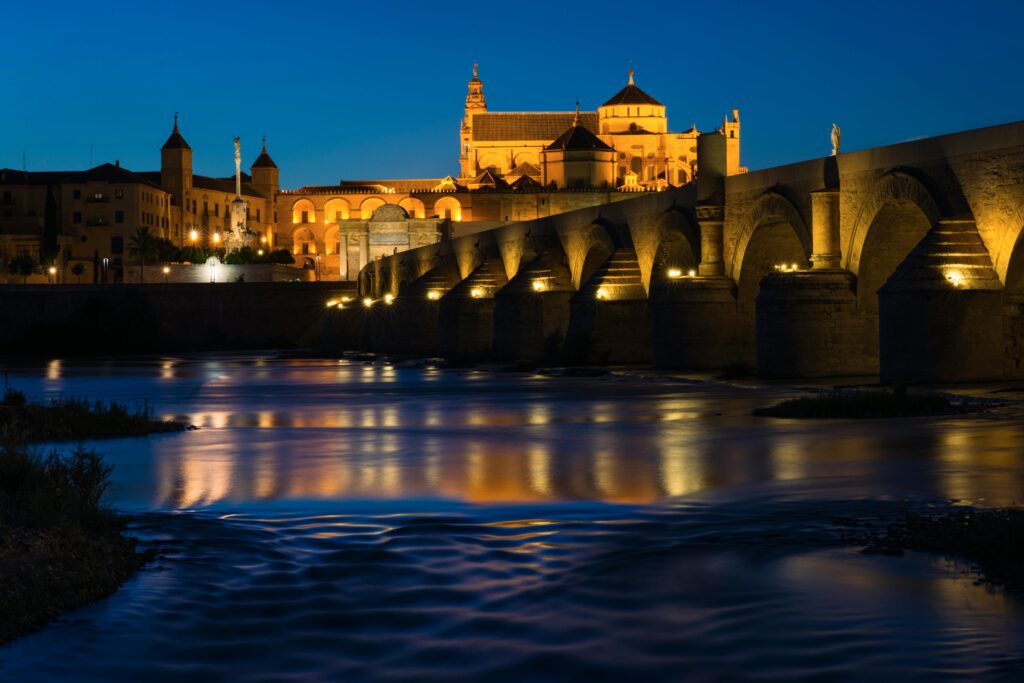
Explore Spain’s history dating back several millennia to the period when it was a member of the Roman Empire by visiting this ancient city located in the Andalusian area in the south of the country. There are numerous Roman ruins and surviving structures in Córdoba, which was once known as Corduba. One such site is a 16-arch bridge that spans the Guadalquivir River.
The city’s massive mosque is the focal point of Córdoba’s amazing medieval architecture, which dates to a time when it was a significant Islamic hub. The mosque, known as La Mezquita, was constructed in the eighth century, and later transformed into a Christian church in the thirteenth. In the medieval Judería, or Jewish neighborhood, there is a 14th-century synagogue that is open for visits. The city has a rich Jewish history, as does all of Spain.
Museums abound in Cordoba. The thousands of years of history of Córdoba and Spain are presented at the Museo Arqueológico de Córdoba. The museum, located on the site of the historic Roman theater in Cordoba, is an added attraction. The theater is accessible from the basement level of the museum once it was excavated.
8. Seville,Spain:
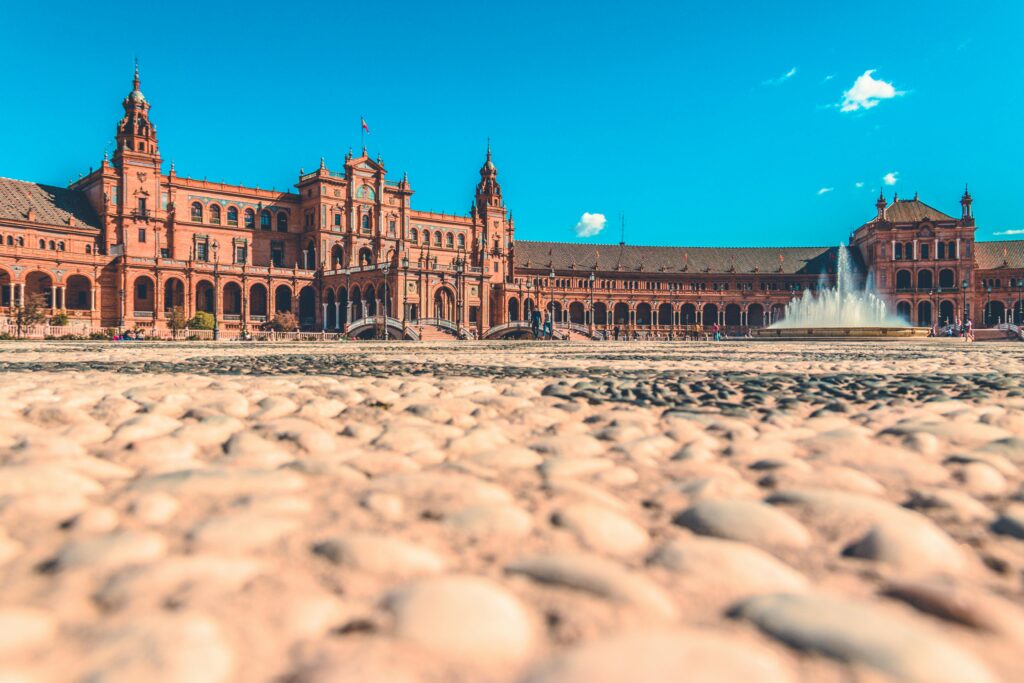
Seville, another stunning and fascinating city in southern Spain, exemplifies the history of the nation as it is being lived. The city is small and ideal for exploration, with a wealth of Roman ruins, Moorish buildings and palaces, and Gothic churches from the era of Castilian domination (when Spain was ruled by monarchs).
Because the city served as the capital of the Moorish dynasty that ruled over it for most of the time, it has a particularly rich Islamic history and culture. It also flourished from the 15th to the 18th century, during Spain’s Golden Age. As it the only port authorized to accept formal trade from Spanish territories in the Americas.
9. Bilbao:

The capital of the Basque area, which borders northern Spain and at times seems like a separate nation, is this city. Despite being a part of Spain, it is recognized as a “autonomous community.” This region of Spain has a distinct language, sometimes known as Basque, as well as distinct food, music, and cultural practices. This once-grim industrial port city became a must-see destination in Spain when the stunning Guggenheim Museum, designed by Frank Gehry and covered in titanium, opened its doors in 1997.
Apart from the artwork housed within the museum, the Art District envelops it. Large sculptures and works of art that are too big to seen inside buildings can found here. It works well with Instagram photos.
Highlights of the city’s culture and tourism include strolling across the Zubizuri pedestrian bridge, the enormous Guggenheim Museum Bilbao, and the Plaza Berria, a large public area with dozens of hip restaurants and shops.
10. Malaga:
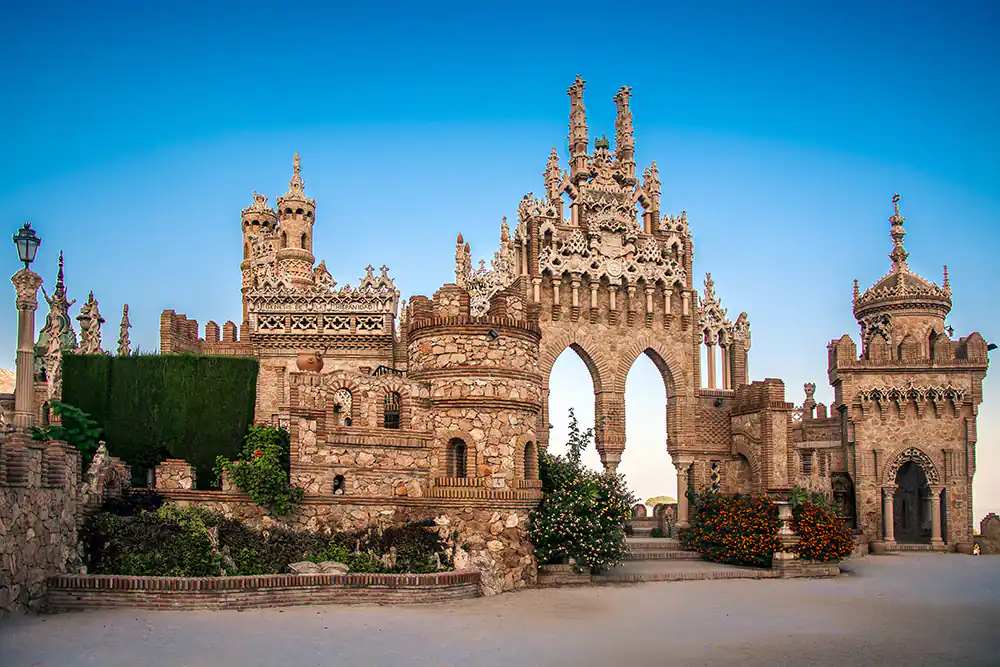
Málaga is another outstanding illustration of the stark cultural contrasts that exist across Spanish cities, emphasizing the influence of North Africa on the nation. It’s on the Spanish Costa del Sol, which is home to several over-developed, generic resort districts and is only a short ferry trip from Africa. Despite being a sizable vacation city, Malaga has remained a port city with African and Spanish roots.
Picasso was born in this city, which also has a sizable museum with an amazing collection of his artwork. This city’s architecture and artwork exhibit Moorish and Islamic influences, much like those of many other southern Spanish cities. There are still two Moorish hilltop strongholds standing: Gibralfaro and Alcazaba. A sizable cathedral in the Renaissance style is also present.
A dense forest of generic, contemporary residential and rental apartment complexes competes with the history and culture for views of the seaside. For citizens of the UK and other colder European nations. The area is a popular second home destination due to its warm and sunny climate. The harbor and beachside districts of Málaga are lively destinations that provide some of the region’s famously delicious cuisine, particularly its seafood.
11. Costa Brava:
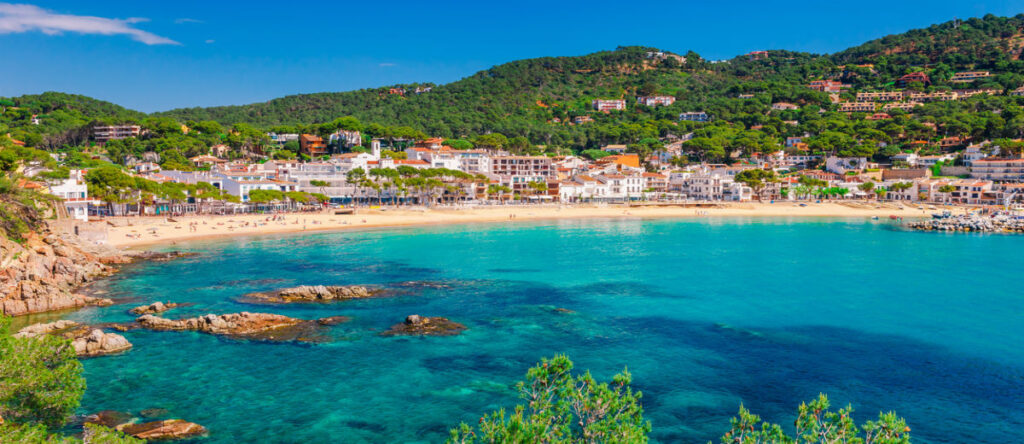
The breathtaking Costa Brava region of Catalonia is a fantastic place to holiday in Spain. This is located on the country’s northern Mediterranean coast, north of Barcelona. And stretches all the way to the French border. Small beaches, rocky cliffs, and an abundance of tiny coves, bays, and inlets can all found there. On the Costa Brava, well-known beach resort communities include Blanes, Tossa de Mar, and Lloret de Mar. Spend a day exploring (and snorkeling around) the nearby, uninhabited Medes Islands, which are only accessible by boat.
The Monasterio de Sant Pere de Rodes, a deserted monastery perched on a hill, is another interesting location for touring. Despite being a ruin, most of the the buildings’ structures—including the enormous church—remain intact. The monastery is in the Cap de Creus natural park area, not far from Figueres. The town where Salvador Dali was born. The sizable Dali Museum, which the artist himself assisted in creating and organizing, is in the town.
12. Segovia:
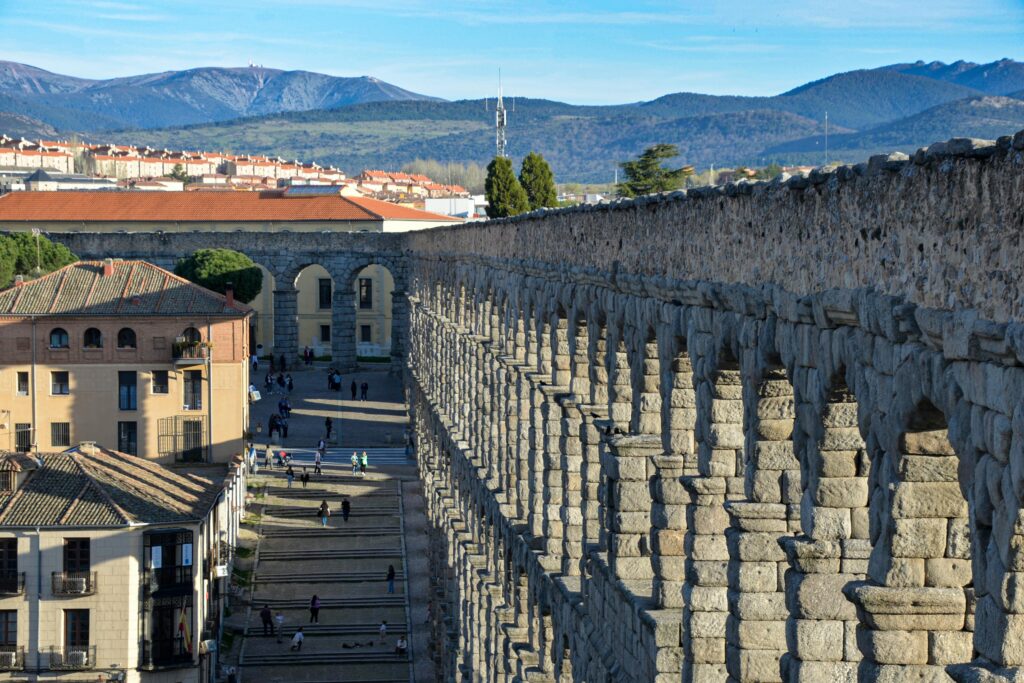
Northwest of Madrid, in the center of Spain, is the city of Segovia. In addition to being a major metropolis throughout the post-medieval era of royal power. The region is rich in Roman ruins. The Gothic cathedral situated on the city’s Plaza . Mayor main square is home to an interesting museum dedicated to religious art. Foodies will find paradise in the Plaza Mayor neighborhood, which is brimming with eateries, cafés, and tapas joints.
Sightseeing highlights in Segovia include the Moorish Alcazar fortress and castle. Which believed to be an inspiration for Walt Disney when creating Cinderella’s Castle for his theme parks. Other must-see attractions include the incredible, double-decked ancient Roman aqueduct and the city’s massive 16th-century Gothic cathedral.
13. Tarragona,Spain:
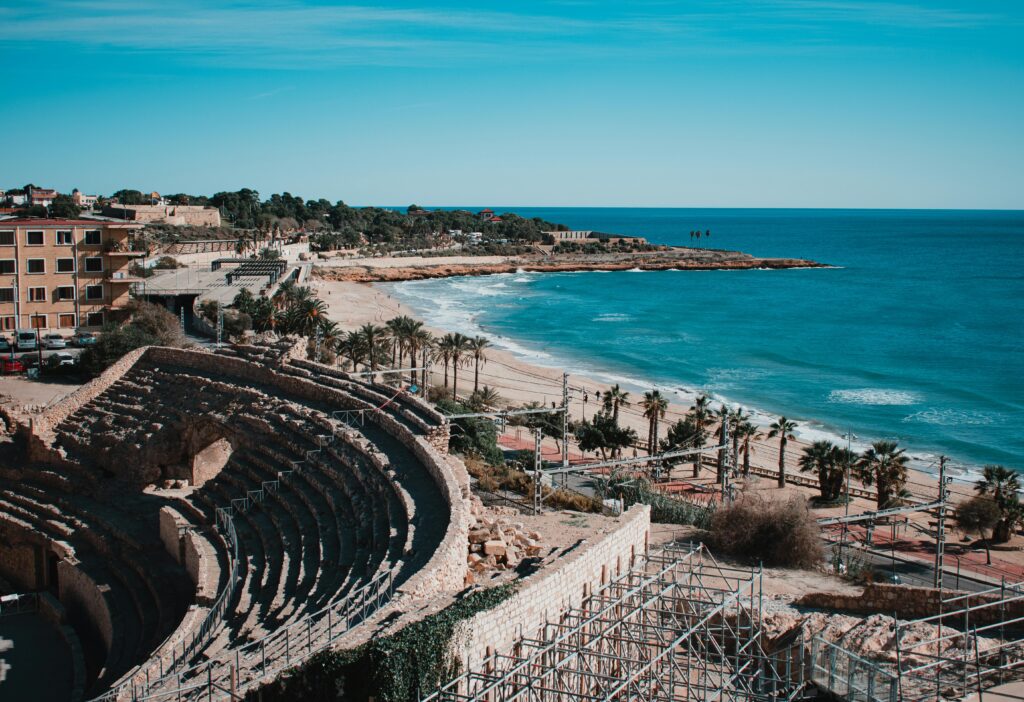
Tarragona is one of the greatest locations in Spain to view relics from the Roman era. The remains of a Roman amphitheater and a Roman circus chariot racetrack. It is a port city in the northeastern area of the nation, in the Catalonia region. Known as “Tarraco” in antiquity, the city features a Roman cemetery. An arena from the second century, and remnants of the old forum. Within and around the medieval walled Old Town area lies all this Roman history.
One can examine a considerable portion of the two-story Roman aqueduct. The National Archeological Museum of Tarragona has a huge collection of remarkable Roman (and prehistoric) items on display, together with a comprehensive account of the history of the city.
After learning about Roman history, visit Tarragona’s lovely beachside resort region to take in the Balearic Sea’s crystal-clear turquoise blue waters.
14. Linares:
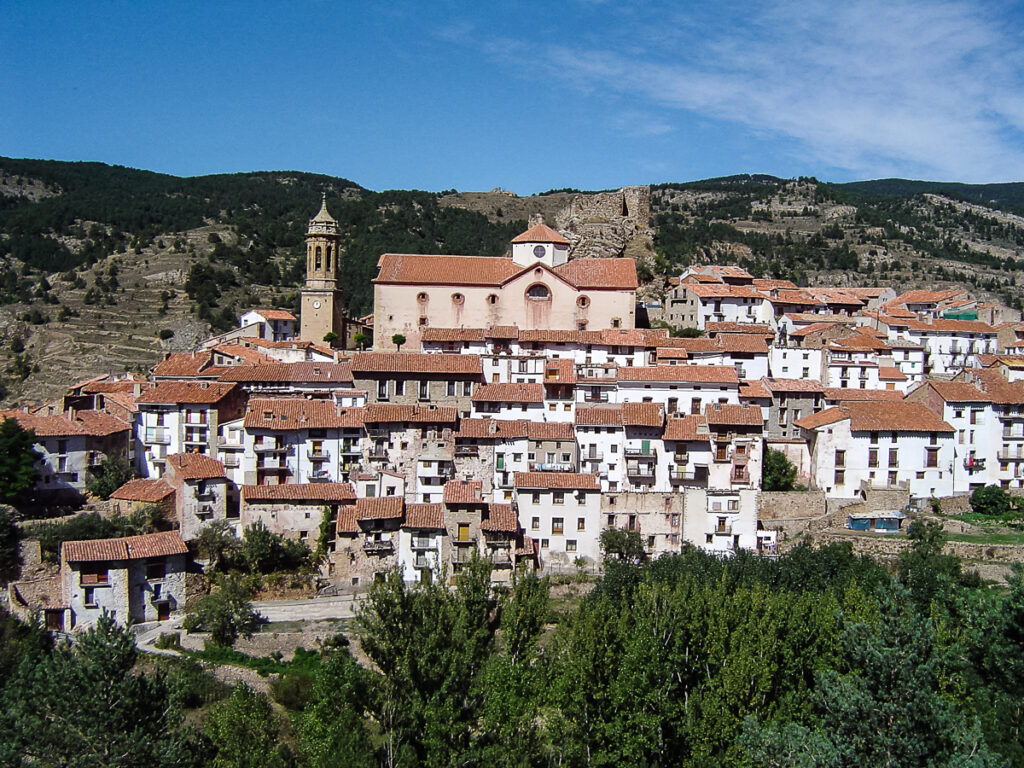
Maestro Andres Segovia was born in Linares, a place of pilgrimage for fans of flamenco guitar music. The instrument played to the pinnacles of musicianship by the master guitarist. His international tours contributed to the guitar’s status as a serious instrument used in orchestral and symphonic works.
Located in a renovated 17th-century palace, the Andres Segovia Foundation. Museum highlights Segovia’s life and gives visitors an opportunity to view his instruments, music, and other personal belongings. The Maestro’s tomb is in a crypt within the museum.
Lies in the Andalusia region, Linares may reached by car from Cordoba or Granada in about 90 minutes.
15. Tenerife:
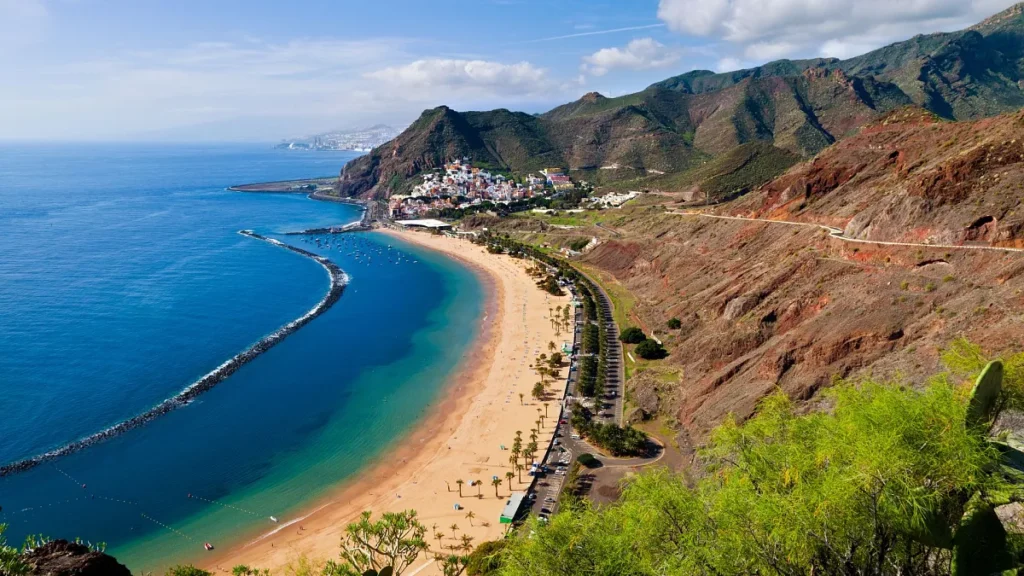
Tenerife, the biggest of Spain’s Canary Islands, provides a complete resort experience. It also has some of the best golf in Spain. The islands are in the Atlantic Ocean, off the coast of Morocco. Although flights from Spain and other European cities are regular due to the islands’ appeal as a resort destination.
Players can play a round of golf on the slope of a volcano at the Abama Golf resort. Playing the course is like to touring a botanical garden with 22 lakes. More than 20,000 palm trees, and over 300 different varieties of subtropical plants. The views are the main attraction here, aside from the difficult course. Nearly every hole on the high course boasts spectacular vistas of the Atlantic Ocean and the nearby island of La Gomera. The resort offers world-class spa treatments, opulent lodging, and a variety of excellent eating establishments in addition to golf.
Visit our website Travel India Info,to know more about the places to explore, or mail us at info@travelindiainfo.com. We are happy to assist you. Happy Travelling!!
Recent Posts
Europe Travel Guide: Best Places to Visit & Explore
15 Best Amazing Places to Explore in Scotland
9 Best Amazing Day Trip To Explore from Kyoto
